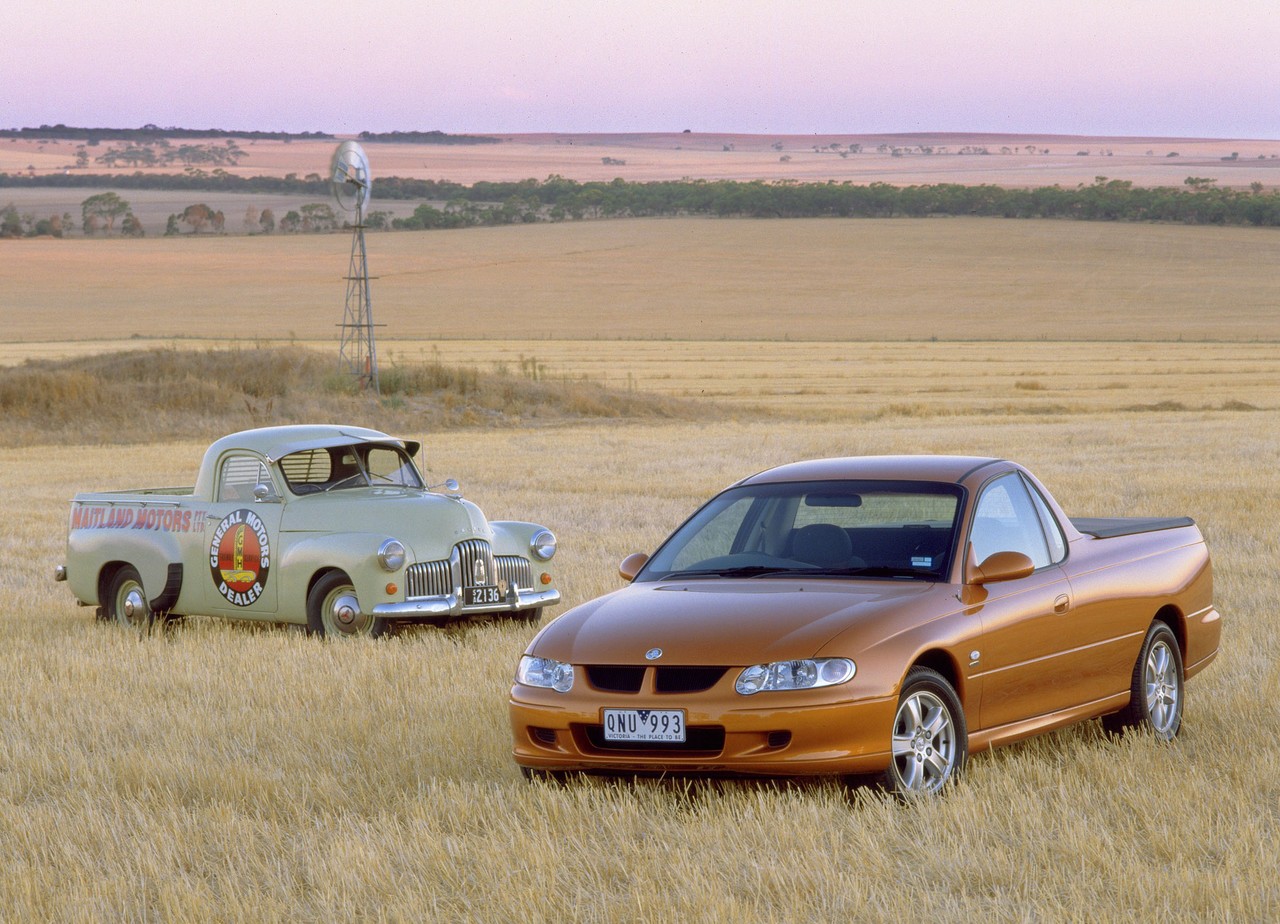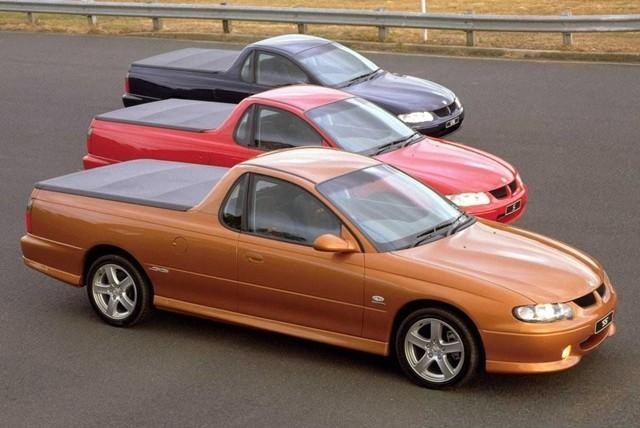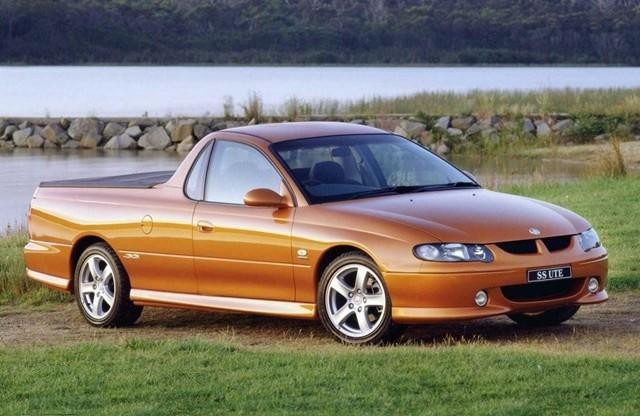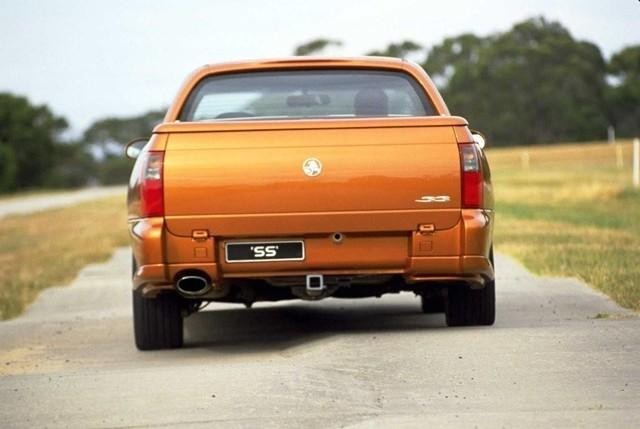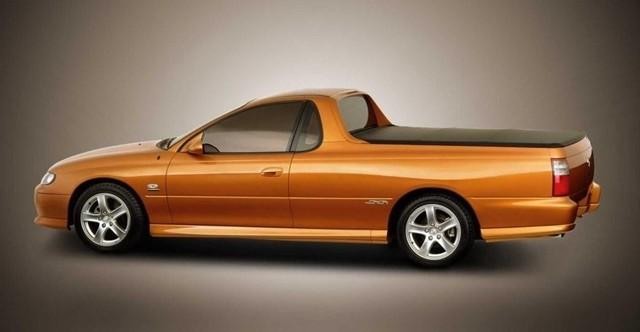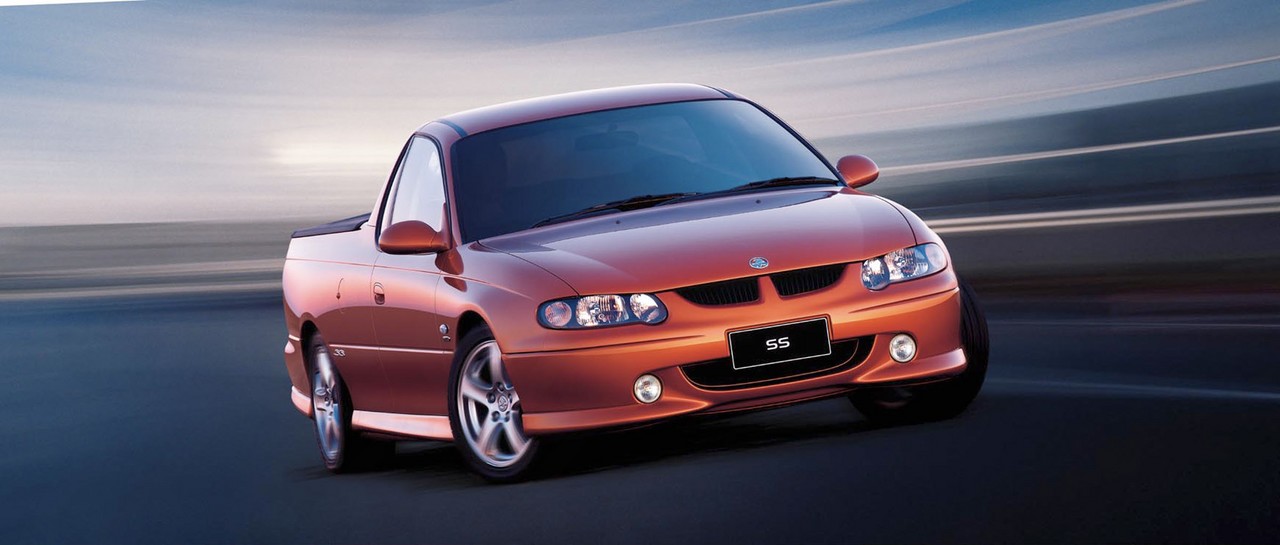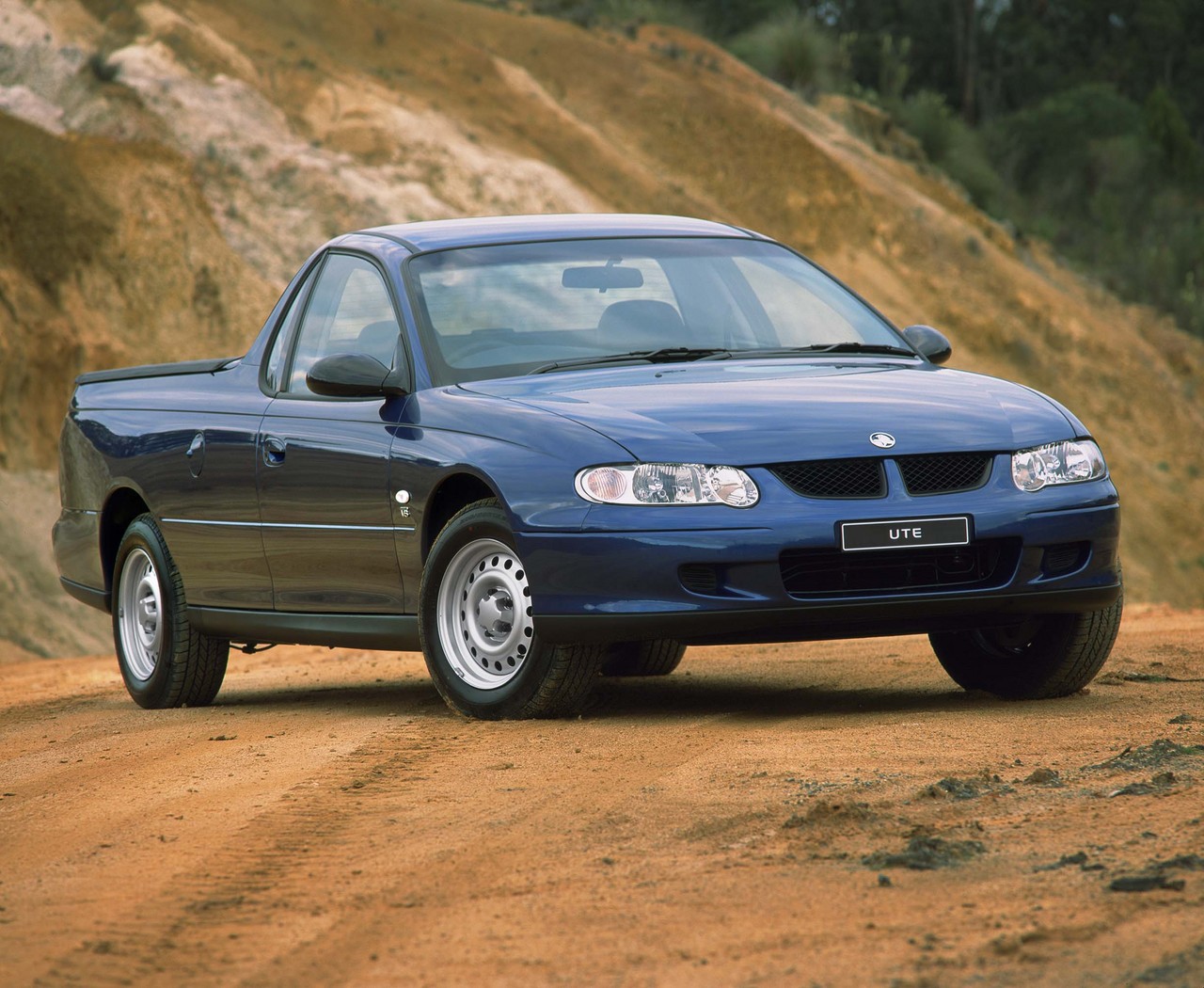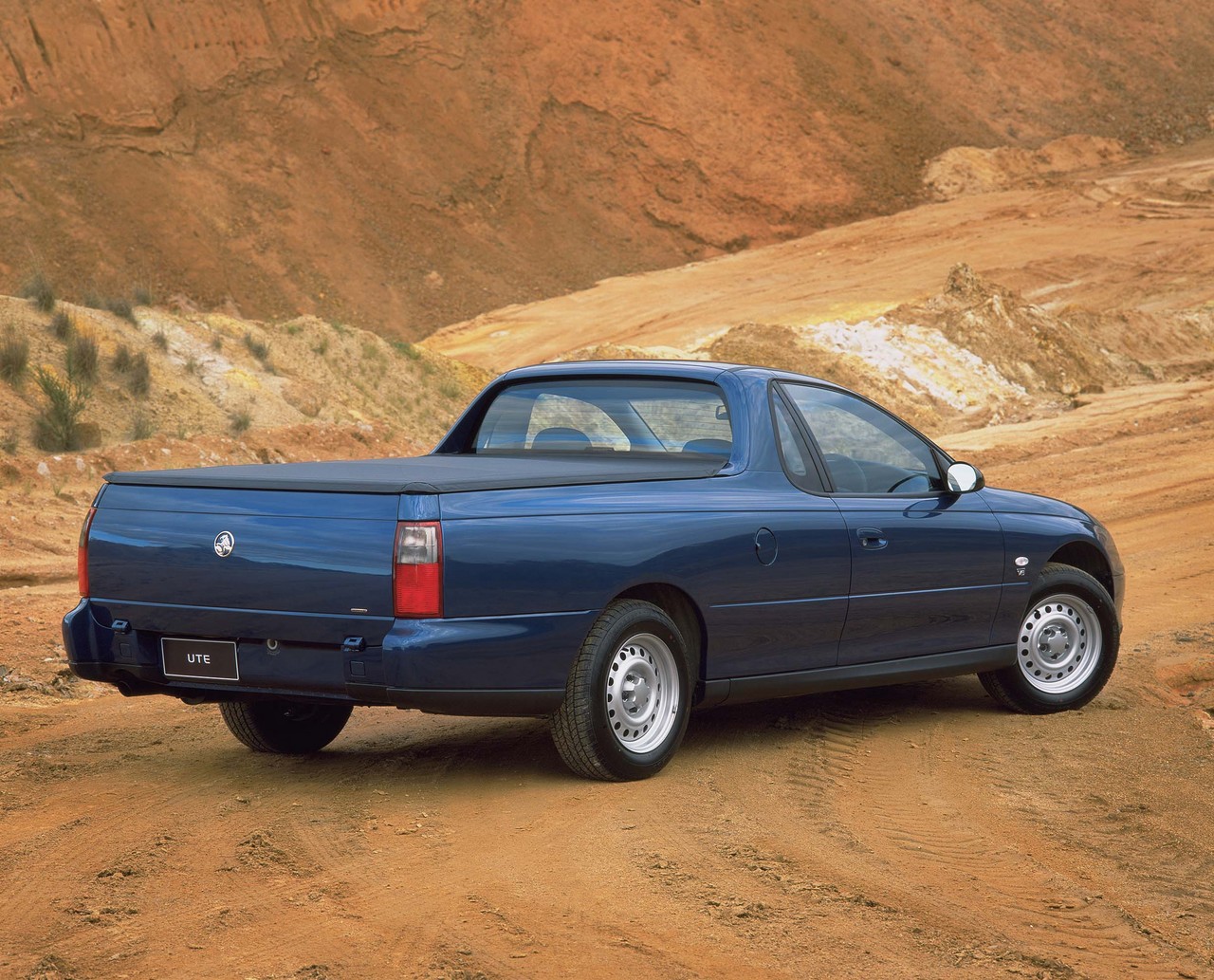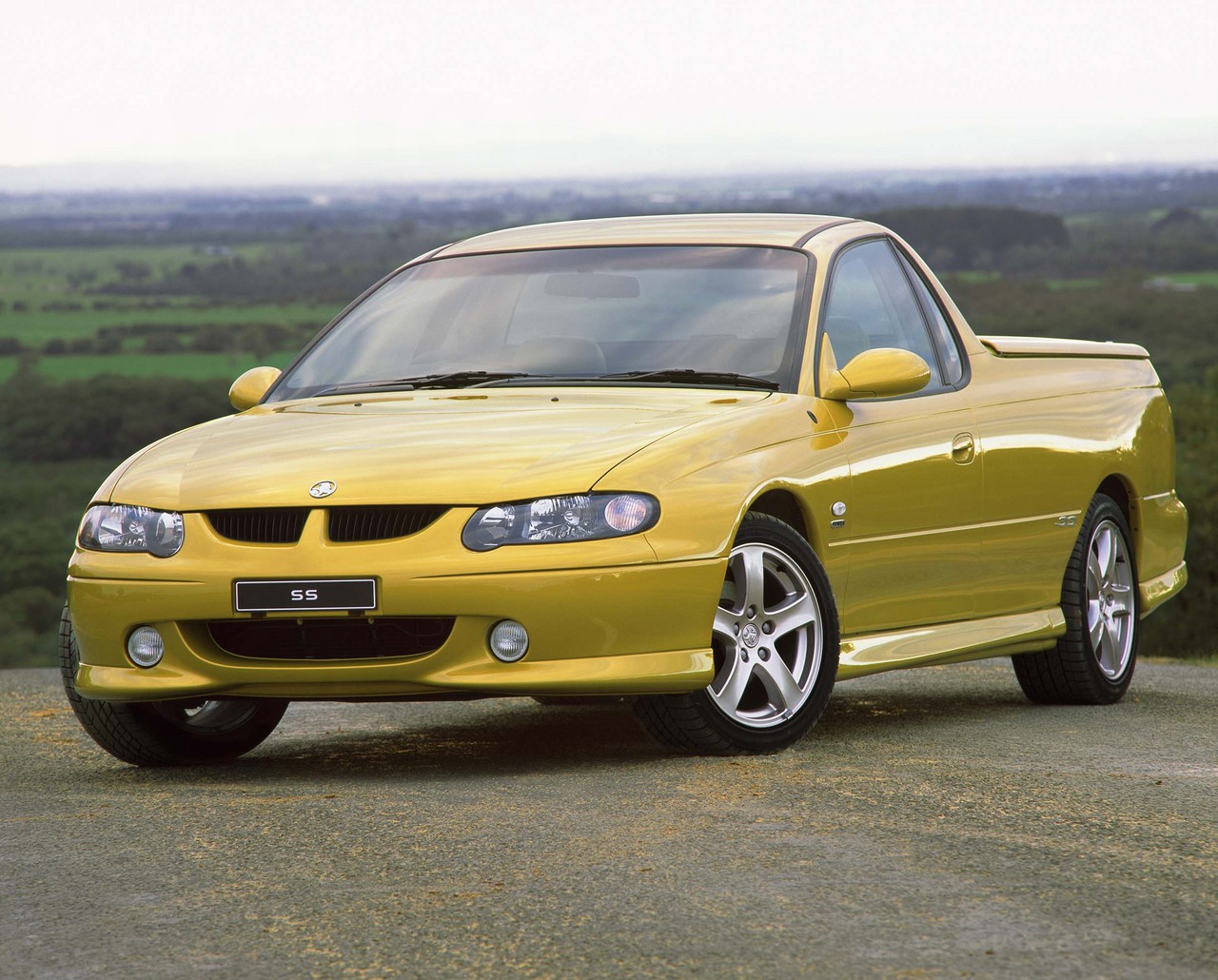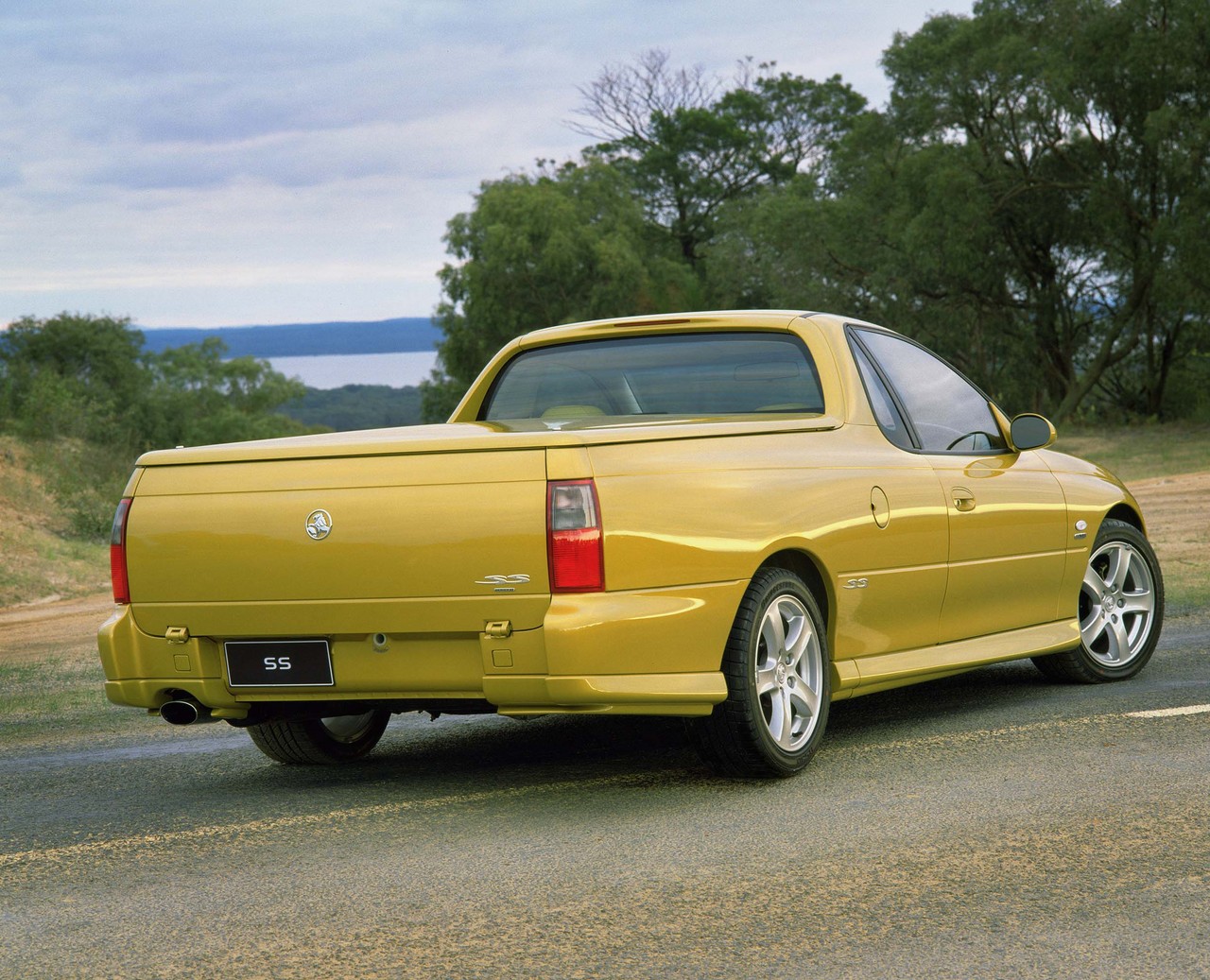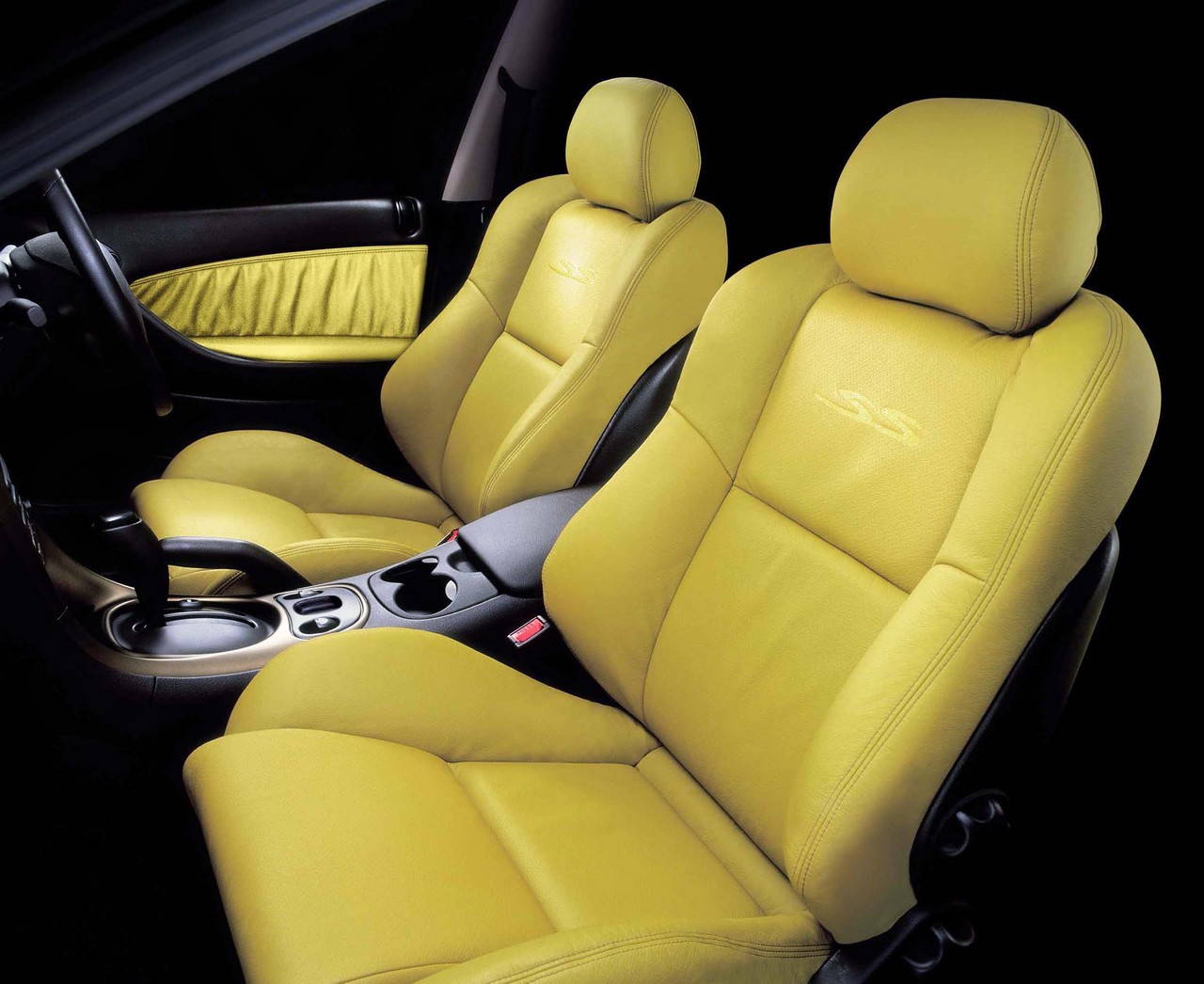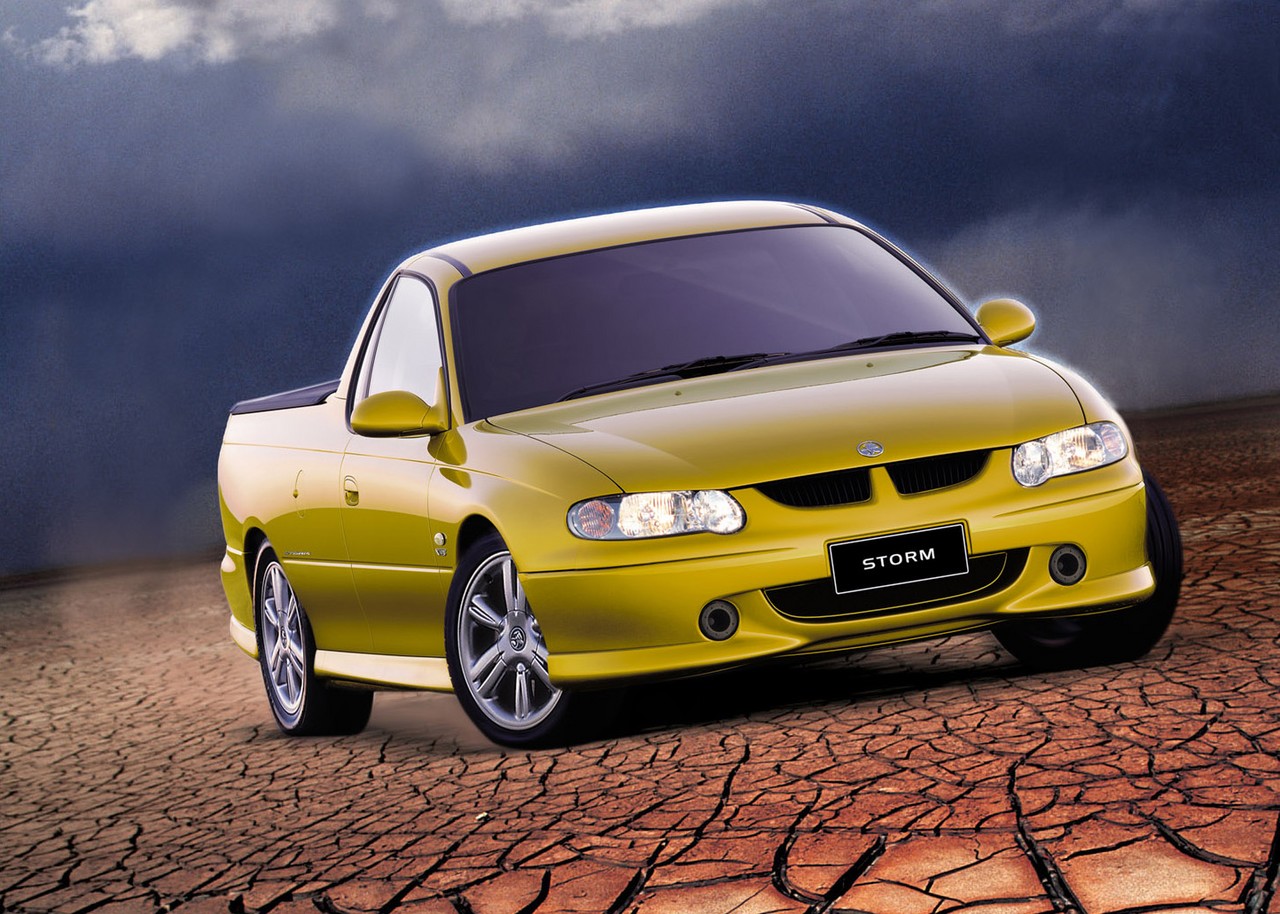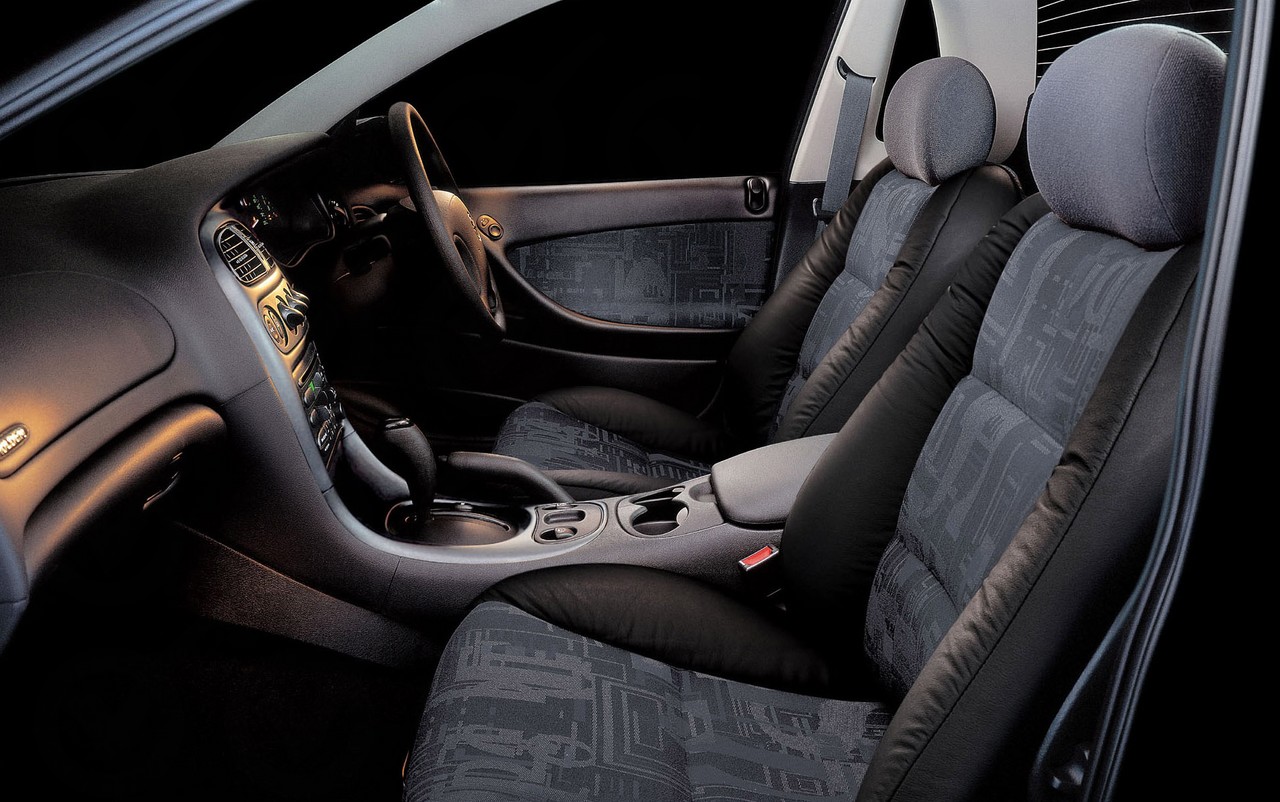
- Economical 3.8-litre L36 V6 engine
- Spacious and comfortable interior
- Accomplished ride/handling balance
- Quiet, well-insulated cabin
- V6 engine coarse above 3000 rpm
- Clunky downshifts for automatic transmission
- Vague steering lacks feel
- Low standard of interior fit and finish
- Poor build quality for 5.7-litre LS1 V8 engine
- No traction control
Review: Holden VU.I Ute (2000-01)
Overview
Released in December 2000, the Holden VU Series I (VU.I) Ute was a single cab, rear-wheel drive utility. Manufactured in Elizabeth, South Australia, the rear-wheel drive VU Ute was available with 3.8-litre V6 and 5.7-litre V8 petrol engines. As per the table below, the VU Ute range consisted of standard, S and SS variants.
V6 and V8 Engines
Of the engines,
- The 3.8-litre L36 pushrod V6 petrol engine had a cast iron block and cylinder head, multi-port fuel injection, two valves per cylinder, a single balance shaft and a compression ratio of 9.4:1. For Utes with automatic transmissions, a dual fuel petrol/LPG option was available for this engine; and,
- The 5.7-litre LS1 pushrod V8 engine had all-aluminium construction, a 99 mm bore, 92 mm stroke, sequential multi-port fuel injection, flat-topped pistons, two valves per cylinder, twin knock control sensors, a compression ratio of 10.1:1 and a 6000 rpm redline. Furthermore, the LS1’s aluminium cylinder block assembly weighed 48.85 kg, resulting in a 40 kg weight saving relative to its 5.0-litre, cast-iron predecessor.
Ttransmissions: 4L60E, M35 and T56
All engines were available with four-speed 4L60E automatic transmissions; models with V6 engines were available with M35 Getrag (‘Getrag 260’) manual transmissions, while models with V8 engines were available with six-speed Tremec T56 manual transmissions.
Body and dimensions
The body structure for the VU Ute was shared with the VX Commodore wagon. Compared to the VS Ute , the VU Ute was 153 mm longer (at 5049 mm), 120 mm narrower (1845 mm), 26 mm lower (1484 mm) and had a 117 mm longer wheelbase (2939 mm). For the entry-level Ute, the maximum payload was 830 kg; for the S and SS, however, maximum payloads were 735 kg and 665 kg, respectively.
The Ute’s cargo area was 2193 mm long at floor level, 1820 mm long at belt level, 1477 mm wide, 1226 mm wide between the wheelhouses, had a depth of 486 mm, featured fully galvanised panels and eight tie-down anchorage points. Furthermore, the flush-fitting tonneau cover had a three-bow system which incorporated an isolation bar and was specially designed to combat the resonances that tonneau covers can cause.
Suspension
The VU Ute had MacPherson strut front suspension and independent rear suspension with semi-trailing arms.
| Variant | Engine | Trans. | Peak power | Peak torque |
|---|---|---|---|---|
| [Unnamed], S |
3.8-litre L36 petrol V6 | 4sp auto, 5sp man. |
152 kW at 5200 rpm | 305 Nm at 3600 rpm |
| S, SS |
5.7-litre LS1 petrol V8 | 4sp auto, 6sp man. |
225 kW at 5200 rpm | 460 Nm at 4400 rpm |
Safety equipment
Standard safety equipment for the VU Ute included a driver’s airbag and front seatbelt pretensioners. The SS variant was also equipped with a passenger airbag and ABS.
Brakes
The VU Ute had 296 mm by 28 mm vented front brake discs with twin-piston calipers and 286 mm by 16 mm solid rear brake discs with single piston calipers.
Features
Standard features for the VU Ute included a four speaker sound system with CD player, remote central locking, power mirrors, a height and reach adjustable steering wheel, load area tie-down hooks, a trip computer and an immobiliser.
The Ute S was further equipped with 16-inch alloy wheels, a limited slip differential, power adjustable driver’s seat (height and tilt), cruise control, steering wheel audio controls, power windows and soft tonneau cover.
The Ute SS was distinguished by its 17-inch alloy wheels, front fog lamps, contoured sports seats, power antenna and leather-wrapped steering wheel and handbrake. Visually, the SS could be identified by its sculptured front fascia, side skirts and colour-coded instrument panel.
Review: Holden VU.II Ute (2001-02)
Overview
Released in August 2001, the VU Series II (VU.II) was a minor update for the Ute range. Inside, the VU.II Ute featured new stalk controls for the indicator, wiper and cruise control functions. Furthermore, security was improved for the S and SS variants by way of a key-fob operated alarm system.
| Variant | Engine | Trans. | Peak power | Peak torque |
|---|---|---|---|---|
| [Unnamed], S |
3.8-litre L36 petrol V6 | 4sp auto, 5sp man. |
152 kW at 5200 rpm | 305 Nm at 3600 rpm |
| S, SS |
5.7-litre LS1 petrol V8 | 4sp auto, 6sp man. |
225 kW at 5200 rpm | 460 Nm at 4400 rpm |
2001 Fifty Edition Ute
In October 2001, a limited-run Fifty edition of the SS was released. Compared to the standard SS, the Fifty edition added 17-inch six-spoke alloy wheels, sports seats with SS ‘Code’ fabric and Hyper Yellow leather bolsters, colour-coded instrument panel and yellow instrument cluster, satin chrome interior highlights, combination Anthracite and leather-wrapped steering wheel, gearshift and handbrake. The Fifty also featured an alloy sports bar and unique exterior finish of Phantom Black paint with side and rear Quicksilver highlights.
2002 Storm Ute
In May 2002, a limited-run Storm variant was released. Based on the entry-level V6 Ute, the Storm added 16-inch six-spoke alloy wheels with FE2 sports suspension, air conditioning, charcoal-coloured seats with Anthracite leather bolsters, unique Titanium-coloured instrument panel, a leather-wrapped steering wheel and SS side skirts and rear bumper. Safety equipment was also enhanced with dual front airbags and ABS.
Related links
- Holden Media Archive: The VX Series II Commodore, Calais, Statesman, Caprice and Holden Ute (August 2001)
- Wikipedia.org: Holden VU Ute
